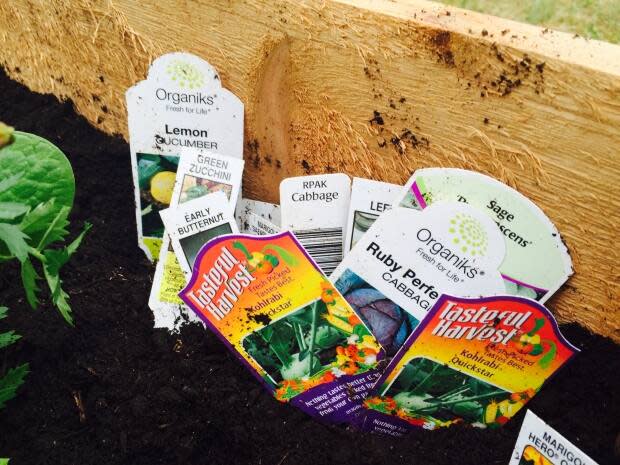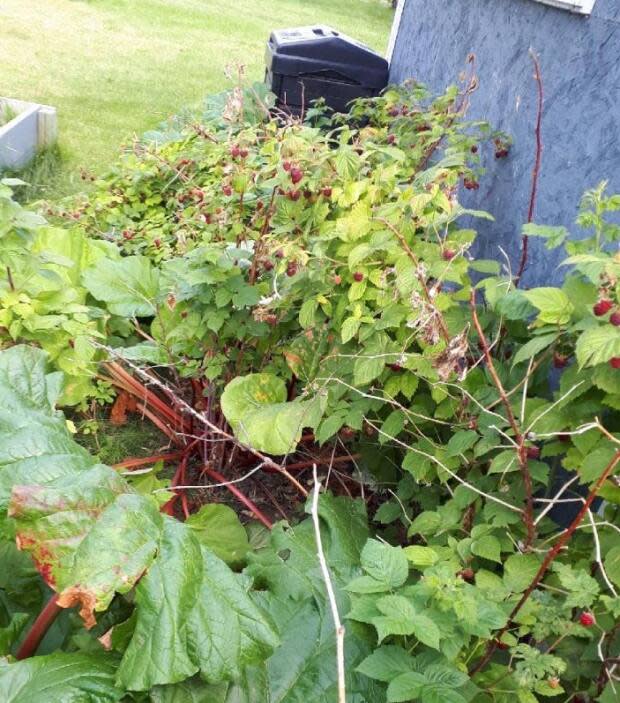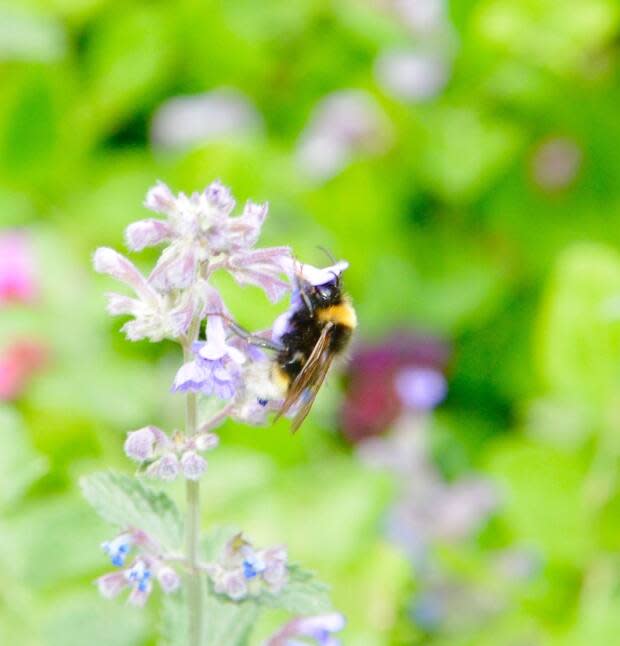Planting vegetables, killing weeds and finding hardy perennials — your Alberta gardening questions answered

On a special edition of Alberta@Noon, horticulturalist Joanna Tschudy answered Albertans' questions about the unique issues around yards and gardens in this province.
From finding hardy perennials, setting up a vegetable garden to controlling over-enthusiastic raspberry bushes, Tschudy, community gardening coordinator for the Calgary Horticultural Society, took on the concerns of callers.
Many Albertans, it turns out, are paying more attention to their gardens this year. Some are just getting into it, while others are determined to start growing their own vegetables.
One caller from the Springbank area, just west of Calgary, had been struggling to use weed and seed-filled soil from her property in a raised garden bed. Losing the battle with weeds, she was hesitant to start using a pesticide.
That's where Tschudy suggested a chemical-free technique called lasagna gardening.
"It's this whole idea of layering, and when you layer cardboard or newspaper newsprint is you're smothering those weeds and you're not giving them a chance to get what they really want, which is sunlight and water," Tschudy said.
Tschudy added she has used the technique to convert a patch of crabgrass into a gardening plot in her own garden.
"So I got lots of cardboard. I layered it really thickly, like four to six layers of cardboard, thick and lots of overlapping … and you can wet down the cardboard in between just to help it follow the contour of the land," she said.
Tshcudy said after that, you can add several layers — alternating nitrogen-producing greenery such as fresh grass clippings and layers of brown "carbons" such as dried leaves, straw or shredded paper. Top it all off with a layer of weed-free black soil.

Alberta@Noon listeners had more Alberta gardening questions for Tschudy. Read on for questions on hardiness, pruning, spruce needles and more.
Q: I planted raspberry bushes and now they're out of control.
A: Tschudy said that when it comes to raspberries, an ounce of prevention is worth a pound of cure.
"So when you're planting raspberries, think about putting in a physical barrier below ground," she said. "They travel by root and they can go under fences and up through your deck. And they're a bugger, they're covered in thorns and prickles."
Tschudy said any kind of physical barrier underground will hold the berry patch in place, such as a two-by-10 piece of lumber or a piece of old metal flashing.

"If they're already on the move and it's too late, you're going to have to do some physical control," she said.
That means digging to find the underground root of the plant.
"You can pull it, like playing tug of war. You suddenly have an inch and then you've got four feet, and just keep going, trace it back, follow it all the way back to where you want to keep them out," she said, adding that it's then time to add an underground barrier to the patch.
Q: Is there a special type of fertilizer that I can use to combat the many spruce tree needles that blow into my garden?
A: Tschudy said that no matter what city or town you're in, spruce trees grow really well in southern Alberta.
"They're a super hardy tree. A lot of people say [the needles] are adding acidity to the soil. They're actually not. It would take quite a long time to change the patch of your soil just from the needle drop off of a spruce tree," she said.
"So really, what they are is a kind of annoying mulch, especially in a new planting bed. You know, if it was a veggie bed or perennial bed, they actually just add carbon to your soil … you really just need to feed your soil and your new bed and those needles, just remove them if they bother you."
Q: My tomato plant leaves are turning black at the tips. What does this mean?
A: Tschudy said that means the plant is probably just getting acclimated to being outside.
"So it's had this very regulated, controlled exposure inside. Everything is under control — moisture, temperature, light, how often it's getting watered and fed," she said.
"There's a lot more variables [outside] and a couple cool nights or strong wind, or too much sun and it'll start to brown up the leaves."
Tschudy said you may see some leaf curl, or some of the older leaves at the base of the plant starting to yellow up and fall off, which is normal.
"So unless they're spots and it's just sort of a generalized discoloration, you can just leave it … if it's bothering you or you feel like it's getting worse, pick those leaves off and throw them away. Don't put them in your home compost," she said.
Q: When is the best time to trim a lilac tree? Mine is still only about one metre tall, but already getting wide and bushy.
A: Tschudy said her favourite time to prune is in the late fall and the early winter.
"That's when the plant is going into full on dormancy and there won't be sap flowing out of the cuts I make. There are not insects or diseases floating about in the air because things have really shut down for the winter," she said.
"So if you can wait till winter, that's probably the safest time. But if you want to go ahead, lilac are really hardy so you can go right ahead and do it. Now, you're going to miss some of the blooms, but you could wait [a few weeks] until after they're done."

Q: What are some hardy lavender and hydrangea plants?
A: Tschudy said that while nothing quite has the smell of a lavendar plant, there are other options.
"Things that are hardy here, like a Russian sage or a catmint or salvias, they have that same beautiful colour and sort of fuzzy 'bluey-grey' leaf. But they're very hardy here. So you could give those a try."
The hydrangea is another story.
"With the hydrangea … if it's not hardy to here, you're going to be out there fussing over it a lot and sort of just waiting and hanging in the wings to see if it'll make it," she said.
"But we've got so many great varieties here, like Annabelle hydrangeas are beautiful. They're stunning. Quickfire hydrangeas, they're all very hardy and very adapted to survive our winter conditions."
With files from Alberta@Noon

